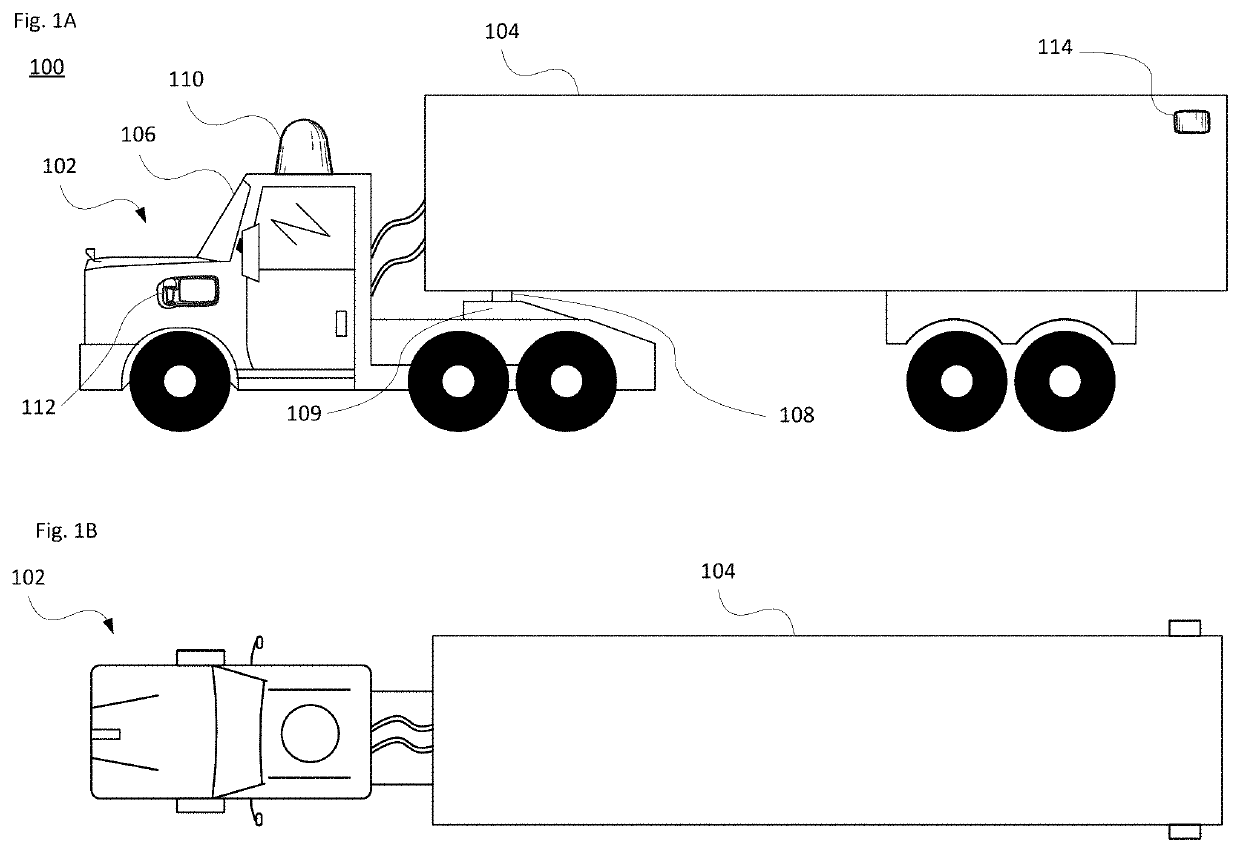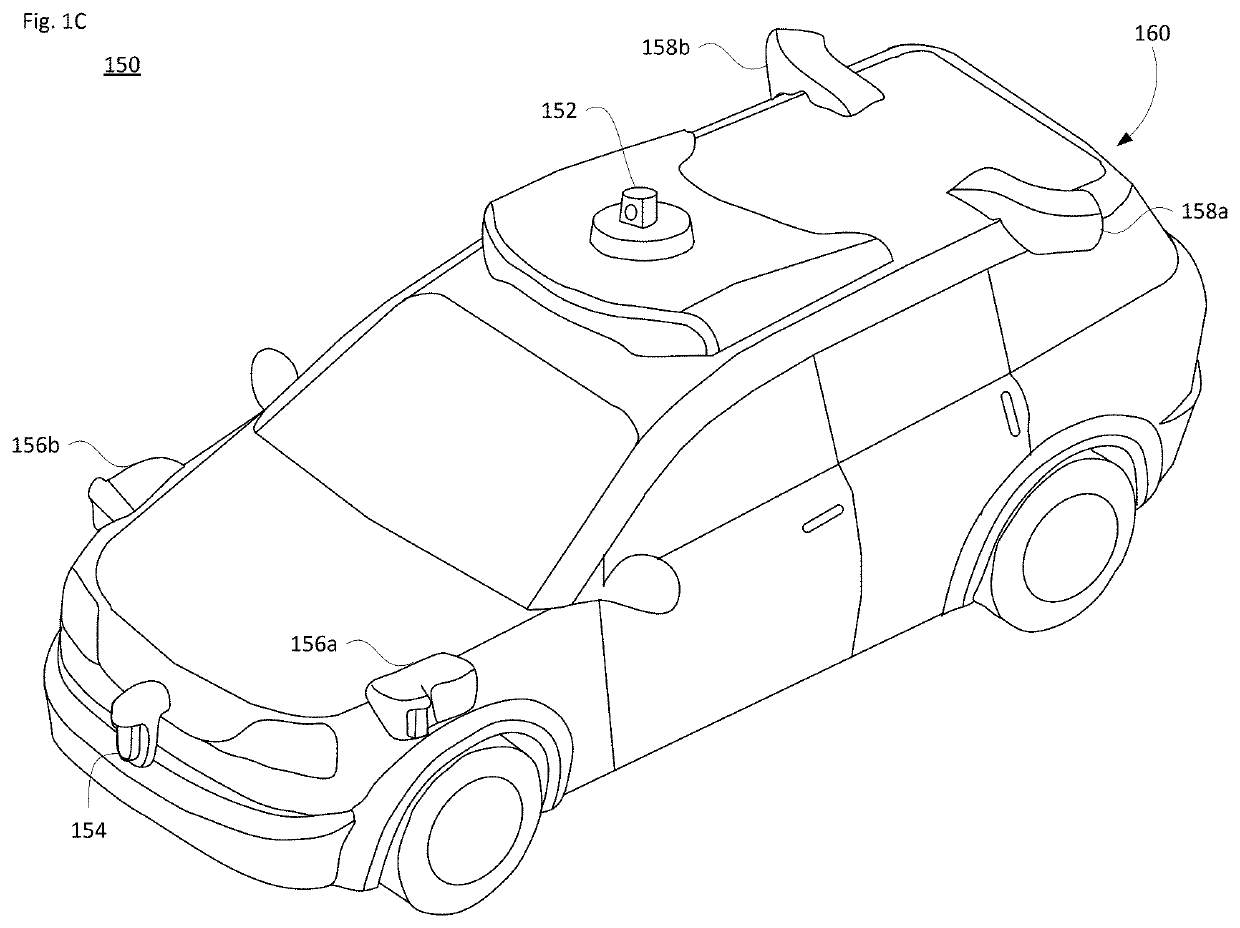Method for performing a vehicle assist operation
a vehicle assist and vehicle technology, applied in the direction of vehicle position/course/altitude control, process and machine control, instruments, etc., can solve the problems of increasing logistical complexity, requiring tight maneuvering with limited sight lines, and many vehicles not equipped with sensors sufficient to enabl
- Summary
- Abstract
- Description
- Claims
- Application Information
AI Technical Summary
Benefits of technology
Problems solved by technology
Method used
Image
Examples
example vehicle
Systems
[0032]FIGS. 1A-B illustrate an example cargo vehicle 100, such as a tractor-trailer truck, and FIG. 1C illustrates an example passenger vehicle 150, such as a minivan. The cargo vehicle 100 may include, e.g., a single, double or triple trailer, or may be another medium or heavy duty truck such as in commercial weight classes 4 through 8. As shown, the truck includes a tractor unit 102 and a single cargo unit or trailer 104. The trailer 104 may be fully enclosed, open such as a flat bed, or partially open depending on the freight or other type of cargo (e.g., livestock) to be transported. The tractor unit 102 includes the engine and steering systems (not shown) and a cab 106 for a driver and any passengers. In a fully autonomous arrangement, the cab 106 may not be equipped with seats or manual driving components, since no person may be necessary.
[0033]The trailer 104 includes a hitching point, known as a kingpin 108. The kingpin 108 is configured to pivotally attach to the tra...
example implementations
[0055]In view of the structures and configurations described above and illustrated in the figures, various implementations will now be described.
[0056]In order to detect the environment and conditions around the vehicle, different types of sensors and layouts may be employed. Examples of these were discussed above with regard to FIGS. 1-2. The field of view (FOV) for each sensor can depend on the sensor placement on a particular vehicle. In one scenario, the information from one or more different kinds of sensors may be employed so that the tractor-trailer or other vehicle may operate in an autonomous mode. Each sensor may have a different range, resolution and / or FOV.
[0057]For instance, the sensors may include a long range FOV lidar and a short range FOV lidar. In one example, the long range lidar may have a range exceeding 50-250 meters, while the short range lidar has a range no greater than 1-50 meters. Alternatively, the short range lidar may generally cover up to 10-15 meters ...
PUM
 Login to View More
Login to View More Abstract
Description
Claims
Application Information
 Login to View More
Login to View More - R&D
- Intellectual Property
- Life Sciences
- Materials
- Tech Scout
- Unparalleled Data Quality
- Higher Quality Content
- 60% Fewer Hallucinations
Browse by: Latest US Patents, China's latest patents, Technical Efficacy Thesaurus, Application Domain, Technology Topic, Popular Technical Reports.
© 2025 PatSnap. All rights reserved.Legal|Privacy policy|Modern Slavery Act Transparency Statement|Sitemap|About US| Contact US: help@patsnap.com



